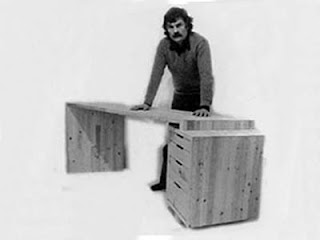Apparantly part of Swedish furniture giant IKEA's success is that it appeals to male hunter gatherer instinct. Insert four scan bolts in pre-drilled holes and hey presto I've made the wife a piece of furniture.
Despite IKEA being a Global innovator the concept of flat pack furniture probably dates back to at least the English Tudor period in the gateleg table. Well, it packed flat enough to be freighted on a horse and cart! The one common link is the use of oak, probably the most durable of timbers. Of course durability and IKEA are never mentioned in the same breath but you would be surprised how attitude towards a piece of furniture makes a difference. The testing of IKEA products is not only vigorous and extensive, but if looked after many of the products do actually last.
Discovering my passion for furniture design as a young man I would have preferred to design for a company like IKEA but I was working 20 years before they dared come to Britain (we were too backward looking for the company who by 1979 operated in 26 other countries). Some of my designs in the 70's could easily have sold in IKEA stores since the 90's but my only career option was to become a solo designer maker as the UK furniture industry was so hidebound. Faced with the choice of creating designs at a reasonable price that give pleasure to many people or making very expensive one offs for an exclusive market my preference still remains the same 40 years on. There shouldn't be an either or choice but the market tends to dictate.
It is highly unlikely my own furniture innovations will ever sit in museums such as the V & A but I can take great personal pride that my High backed rocker in particular has found hundreds of homes worldwide, is usable and accessible to ordinary people and some are now being handed down (see image in 'My beautiful hands'). I did produce a plywood flatpack version in the late 70's which was turned down by a local furniture retail shop. 'The public don't like plywood' the shop owner declared.
The Early Tudor Gateleg Table - forerunner to flat pack furniture?
An IKEA room set photographed by Jeremy Broun in 1979 on his visit to
the original Stockholm store as part of a Churchill Travel Scholarship.
A sturdy oak dining chair from IKEA in 2006. The main downside of pack flat furniture
is the failure of the consumer to tighten the bolts a few months after the furniture has





















